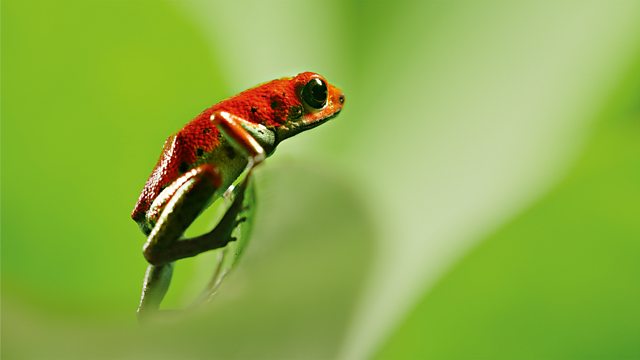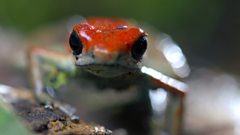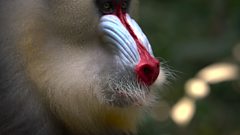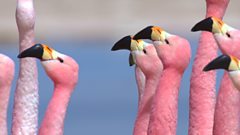Seeing in Colour
Using the latest camera technology, David Attenborough reveals the extraordinary ways in which animals use colour: to win a mate, to fight off rivals and to warn enemies.
The natural world is full of colours. For us, they are a source of beauty, but for animals they are a tool for survival. David Attenborough reveals the extraordinary ways in which animals use colour: to win a mate, to fight off rivals and to warn enemies. In India, peacocks dazzle females with magnificent tail feathers; a tiny hummingbird in the deserts of North America unfurls his spectacular headdress as he dances for a mate; and in the darkness of a rainforest, powerful mandrill baboons signal their status with red and blue face masks, while tiny frogs warn of deadly poisons with brilliant colours.
New camera technologies - some developed especially for this series – also allow us to see colours and patterns usually invisible to human eyes. Ultraviolet cameras reveal bright signals on a butterfly’s wings and facial markings on yellow damselfish that are used as secret communication channels. Some animals can also detect polarised light, and specialist cameras can now show us how fiddler crabs see the world, and how mantis shrimp have strange polarisation patterns on their bodies to signal to a mate or rival.
Last on
More episodes
Previous
You are at the first episode
Clips
-
![]()
The hummingbird shows his colours
Duration: 01:34
-
![]()
Poison dart frogs battle it out
Duration: 01:15
-
![]()
What the colours of mandrill males reveal
Duration: 00:45
-
![]()
Revealing extraordinary stories about life in colour
Duration: 02:02
Credits
| Role | Contributor |
|---|---|
| Presenter | David Attenborough |
| Series Producer | Sharmila Choudhury |
| Producer | Sally Thomson |
| Production Company | Humble Bee Films |
Broadcasts
Featured in...
![]()
Best of 2021
Enthralling documentaries from the past year exploring nature and the field of science.
![]()
Best of 2021
Gripping real-life stories from the past year.
![]()
Earth Day
Facts about the environment and the challenges facing our planet to mark Earth Day.
![]()
Our Planet Now
Facts about the environment and the challenges facing our planet.
![]()
Family Favourites
Must watch shows from across the ����ý
![]()
Sir David Attenborough
Sir David Attenborough's amazing programmes from the 1950s to the present day.
![]()
Sir David Attenborough
His incredible programmes and his amazing career - all in one place
![]()
Wonderful Wildlife
Explore the world around you with natrual history from across the ����ý ...
![]()
Family Favourites
All your favourites from across the ����ý








